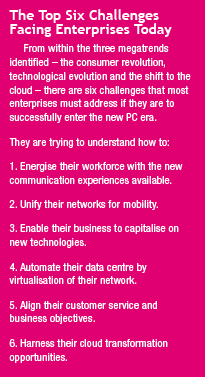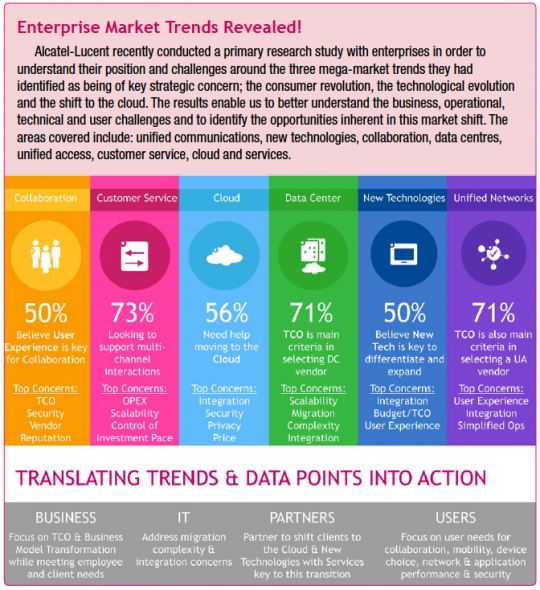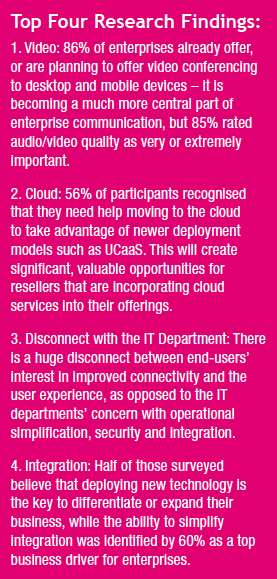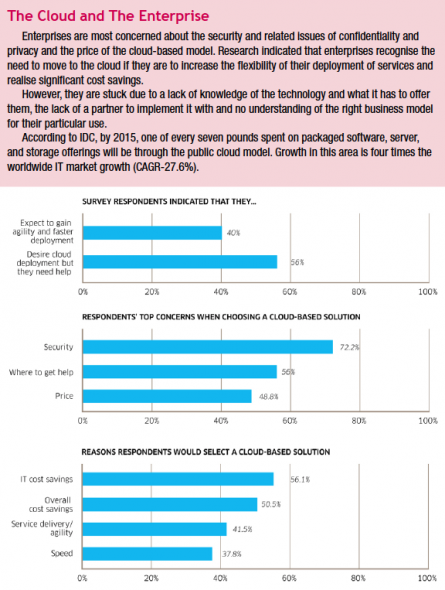
Editor Ian Hunter comments on new research by Alcatel-Lucent showing three trends significantly affecting the way we communicate: the growth of consumer mobile devices and applications, a move toward open architecture, and a transformation to business models reliant on pay-as-you-go services.
 All markets, whatever the industry or geography, evolve over time. The enterprise communications market has also advanced over the past 30 years driven by a continuous technical evolution. Recently, user behaviour in the enterprise has also changed dramatically in a very short period of time.
All markets, whatever the industry or geography, evolve over time. The enterprise communications market has also advanced over the past 30 years driven by a continuous technical evolution. Recently, user behaviour in the enterprise has also changed dramatically in a very short period of time.
In the beginning, enterprise communications were designed to fulfil basic needs, such as connectivity between two people or locations. Over time, they have gradually become more sophisticated delivering services such as integrated messaging, conferencing and collaboration to name a few.
Enterprise communications have moved up the economic value chain from being personal computer (PC) based to more than just a connectivity tool to help organisations improve productivity—they now empower users and speed up decision-making.
While many organisations have not yet harnessed the full power and potential of communications for their own competitive advantage, people are already asking:
The future of this enterprise market is being shaped by megatrends and innovations of the last decade:
• A consumer revolution where social networks, smart mobile devices, telecommuting, visual and real-time collaborative content are redefining the way people communicate.
• A technology evolution that is moving towards open architectures and standardised technologies to support the growing demand for new deployment and consumption models.
• A business model transformation accelerated by business and economic imperatives, leading to a growing demand for pay-as-you-go models supported by new kinds of hosted and managed architectures often referred to as the ‘cloud’.

The combined impact of these megatrends creates a favourable environment for transforming enterprise communications. The synergy between the unified communications components and the underlying network enables real-time, workforce collaboration with network application fluency.
One new entrant into the enterprise, the tablet, embodies this transformation. Tablets and other personal devices are used in the enterprise either with or without any IT department authorisation, in which case they are part of the BYOD, ‘Bring Your Own Device’, phenomenon.
Although the growth in worldwide tablet shipments is expected to slow to 19.4% (IDC March 2014) as the market matures, enterprises are taking a larger part of the mix with 14% of tablets sold this year, and are expected to climb to 18% by 2018.
Employees are copying their consumer habits and pasting them into their professional lives. The tablet heralds a future where the device will be nothing more than the access point to individual and personal content. The content will be stored in a ‘space,’ available from anywhere, any device, at any time. Employees are also bringing their own smart phones to work with a significant number in violation of IT policies.
We are entering the Personal Cloud Era.
What does the Personal Cloud Era mean for organisations and how can they embrace the opportunities offered by this global transformation? It is important to note that the Personal Cloud Era will not put an end to the Personal Computer Era. Laptops will continue to play a significant role in enterprise communications. The Personal Cloud Era does, however, change how content is accessed and from where.
Organisations are continuing to invest in fulfilling the needs of an increasingly mobile and collaborative workforce. Recent research by Alcatel-Lucent indicates that 91% of enterprises allow some employees to work remotely. Meanwhile, IT departments are redefining their role and adapting their mandate and mission to shifting business conditions. This is leading to a consumer and technology innovation driven evolution of communications services and network infrastructure, while taking advantage of new business and consumption models such as the ones offered by cloud-based architectures.
In addressing the demand for the Personal Cloud, we are facing a global transformation that requires preparation and planning. In fact, according to the survey only 15% are not concerned, 30% have already deployed some type of cloud solution and 54% are in the process of deployment.
Alcatel-Lucent Enterprise has undertaken primary research among 1,000 members of its international customer base and 300 of its channel partners to identify the main challenges and opportunities for enterprises which have been created by developments in technology and behaviour. Businesses are often keen to use new technologies but significant barriers remain.
Manish Sablok, Head of Marketing for CNE Europe at Alcatel-Lucent Enterprise, says the research survey highlights the different priorities of end users and network managers. In fact he alludes to a disconnect between the IT enablers and their users.
“What the research confirms is that while user-experience is a concern for both the network end-user and the IT departments that implement and manage those networks, end-users are primarily interested in connectivity, from anywhere on any device and with a consistent user experience, but IT departments are more concerned with operational simplification, security and integration.
It comes as no great surprise to discover this, and of course the answer is to provide businesses with technology that helps them to meet their needs, while simultaneously offering users the experience they have now come to expect.
Whether CAPEX/OPEX/TCO or as the simplification of operations, budget is a key factor affecting IT decision-making. 71% of respondents cited TCO as the main criteria when selecting both data centre and unified network vendors.
Of course it is understandable that IT departments rate issues such as security and TCO very highly, and these are priorities that can be easily justified, but some IT managers are having difficulty making the business case to management to move forward with unifying networks and supporting user interests.
Sablok says that video leads the field in ‘must-haves’ for the enterprise
“Enterprises believe that to be successful they need to provide users with a multimedia (66%) multi-party (69.3%), multi-device (73.6%) and real-time collaboration experience (78.5%). The importance of video capability is confirmed in the research, which shows that 86% of enterprises already offer, or are planning to offer video conferencing to desktop and mobile devices and is one of the top new technologies that enterprises want.
Video and video conferencing is becoming a much more central part of enterprise practices but requires consistent network performance to deliver a high quality experience – audio/video quality was rated as either very or extremely important by 85% of participants.”
BYOD is a top priority for 75% of IT professionals, and by bringing employees’ communication tools and personal devices back within the control of IT departments through a unified access network, the enterprise can guard against the rise of ‘shadow IT’, which is self-provisioning and operating outside their reach. At the same time an intelligent, automated and dynamic network management system can control and direct traffic from fixed and mobile devices, offering the end user the connectivity and high-quality experience that they expect.
According to the survey the cloud provides new possibilities, but over 50% of users need help moving over.
Sablok says that advancements in the cloud and hosted services have opened new possibilities to deliver unified communications and collaboration tools as well as satisfy budgetary concerns.
“By supporting businesses to shift to the cloud and providing modern, unified communications via UCaaS models, it is possible to offer an affordable, scalable solution that is flexible enough to adapt to business requirements, while dramatically reducing up-front costs.
But 56% of our participants recognised that they need help moving to the cloud to take advantage of these technological developments.”
 Open architecture and standardised technology are addressing integration concerns.
Open architecture and standardised technology are addressing integration concerns.
Integration is rated as one of the key concerns across many of the challenges facing enterprises today. Half of those surveyed believe that deploying new technology is the key to differentiate or expand their business, but the ability to simplify integration was identified by 60% as a top business driver for enterprises.
Simplified integration is being driven by the shift to open standards in technology, which increases interoperability and enhances IT flexibility. When being offered solutions based on open standards, businesses are in a position to select what suits their needs, rather than being stuck with a vendor due to closed protocols and propriety technologies.


